 The mood has changed in international markets. Investors are becoming more pessimistic about recovery in the world economy and of the likely direction of share prices. Concern has centred on the Chinese economy. Forecasts are for slower Chinese growth (but still around 5 to 7 per cent) and worries centre on the impact of this on the demand for other countries’ exports.
The mood has changed in international markets. Investors are becoming more pessimistic about recovery in the world economy and of the likely direction of share prices. Concern has centred on the Chinese economy. Forecasts are for slower Chinese growth (but still around 5 to 7 per cent) and worries centre on the impact of this on the demand for other countries’ exports.
The Chinese stock market has been undergoing turmoil over the past few weeks, and this has added to jitters on other stock markets around the world. Between the 5th and 24th of August, the FTSE 100 fell by 12.6%, from 6752 to 5898; the German DAX fell by 17.1% from 11,636 to 9648 and the US DOW Jones by 10.7% from 17,546 to 15,666. Although markets have recovered somewhat since, they are very volatile and well below their peaks earlier this year.
But are investors right to be worried? Will a ‘contagion’ spread from China to the rest of the world, and especially to its major suppliers of raw materials, such as Australia, and manufactured exports, such as the USA and Germany? Will other south-east Asian countries continue to slow? Will worries lead to continued falls in stock markets as pessimism becomes more entrenched? Will this then impact on the real economy and lead then to even further falls in share prices and further falls in aggregate demand?

Or will the mood of pessimism evaporate as the Chinese economy continues to grow, albeit at a slightly slower rate? Indeed, will the Chinese authorities introduce further stimulus measures (see the News items What a devalued yuan means to the rest of the world and The Shanghai Stock Exchange: a burst bubble?), such as significant quantitative easing (QE)? Has the current slowing in China been caused, at least in part, by a lack of expansion of the monetary base – an issue that the Chinese central bank may well address?
Will other central banks, such as the Fed and the Bank of England, delay interest rate rises? Will the huge QE programme by the ECB, which is scheduled to continue at €60 billion until at least September 2016, give a significant boost to recovery in Europe and beyond?
The following articles explore these questions.
Articles
The Guardian view on China’s meltdown: the end of a flawed globalisation The Guardian, Editorial (1/9/15)
Central banks can do nothing more to insulate us from the Asian winter The Guardian, Business leader (6/9/15)
Where are Asia’s economies heading BBC News, Karishma Vaswani (4/9/15)
How China’s cash injections add up to quantitative squeezing The Economist (7/9/14)
Nouriel Roubini dismisses China scare as false alarm, stuns with optimism The Telegraph, Ambrose Evans-Pritchard (4/9/15)
 Markets Are Too Pessimistic About Chinese Growth Bloomberg, Nouriel Roubini (4/9/15)
Markets Are Too Pessimistic About Chinese Growth Bloomberg, Nouriel Roubini (4/9/15)
Data
World Economic Outlook databases IMF: see, for example, data on China, including GDP growth forecasts.
Market Data Yahoo: see, for example, FTSE 100 data.
Questions
- How do open-market operations work? Why may QE be described as an extreme form of open-market operations?
- Examine whether or not the Chinese authorities have been engaging in monetary expansion or monetary tightening.
- Is an expansion of the monetary base necessary for there to be a growth in broad money?
- Why might the process of globalisation over the past 20 or so years be described a ‘flawed’?
- Why have Chinese stock markets been so volatile in recent weeks? How seriously should investors elsewhere take the large falls in share prices on the Chinese markets?
- Would it be fair to describe the Chinese economy as ‘unstable, unbalanced, uncoordinated and unsustainable’?
- What is the outlook over the next couple of years for Asian economies? Explain.
- For what reasons might stock markets have overshot in a downward direction?
 It was argued in an earlier blog on the Greek debt crisis that a deus ex machina was needed to find a resolution to the impasse between Greece and its creditors. The most likely candidate for such as role was the IMF.
It was argued in an earlier blog on the Greek debt crisis that a deus ex machina was needed to find a resolution to the impasse between Greece and its creditors. The most likely candidate for such as role was the IMF.
Three days before the Greek referendum on whether or not to accept the Troika’s proposals, the IMF has stepped onto the stage. To the undoubted surprise of the other two partners in the Troika (the European Commission and the ECB), the IMF argues that Greece’s debts are unsustainable and that much more is needed than a mere bailout (which simply rolls over the debt).
According to the IMF, Greece needs €52bn of extra funds between October 2015 and December 2018, large-scale debt relief, a 20-year grace period before making any debt repayments and then  debt repayments spread over the following 20 years. In return, Greece should commit to supply-side reforms to cut out waste, reduce bureaucracy, improve tax collection methods and generally improve the efficiency of the economic system.
debt repayments spread over the following 20 years. In return, Greece should commit to supply-side reforms to cut out waste, reduce bureaucracy, improve tax collection methods and generally improve the efficiency of the economic system.
It would also have to agree to the previously proposed primary budget surplus (i.e. the budget surplus excluding debt repayments) of 1 per cent of GDP this year, rising to 3.5 per cent in 2018.
So it this what commentators have been waiting for? What will be the reaction of the Greeks and the other two partners in the Troika? We shall see.
Articles
IMF says Greece needs extra €50bn in funds and debt relief The Guardian. Phillip Inman, Larry Elliott and Alberto Nardelli (2/7/15)
IMF: 3rd Greek bailout would cost €52bn. Or more? Financial Times, Peter Spiegel (2/7/15)
IMF: Greece needs to reform for sustainable debt, financing needs rising CNBC, Everett Rosenfeld (2/7/15)
The IMF has made an obvious point about Greece’s huge debt. Here’s why it still matters Quartz, Jason Karaian (3/7/15)
Greece: when is it time to forgive debt? The Conversation, Jagjit Chadha (2/7/15)
IMF Analysis
Greece: Preliminary Draft Debt Sustainability Analysis IMF (2/7/15)
Preliminary Debt Sustainability Analysis for Greece IMF (25/6/15)
Questions
- To which organisations is Greece indebted? What form to the debts take?
- To what extent is Greece’s current debt burden the result of design faults of the euro?
- What are the proposals of the IMF? What effect will they have on the Greek economy if accepted?
- How would the IMF proposals affect aggregate demand (a) directly; (b) compared with the proposals previously on the table that Greece rejected on 26 June?
- What would be the effects of Greek exit from the euro (a) for Greece; (b) for other eurozone countries?
- What bargaining chips can Greece deploy in the negotiations?
- Explain what is meant by ‘moral hazard’. Where in possible outcomes to the negotiations may there be moral hazard?
- What has been the impact of Greek austerity measures on the distribution of income and wealth in Greece?
- What are the practicalities of pursuing supply-side policies in Greece without further dampening aggregate demand?
 In the late 2000s, Zimbabwe experienced hyperinflation. As a post on this site in January 2009 said, two estimates of the inflation rate were made: one of 5 sextillion per cent (5 and 21 zeros); the other of 6.5 quindecillion novemdecillion per cent (65 and 107 zeros). In January 2009, in a last attempt to save the Zimbabwean currency, a new series of banknotes was issued, including a Z$100 trillion note.
In the late 2000s, Zimbabwe experienced hyperinflation. As a post on this site in January 2009 said, two estimates of the inflation rate were made: one of 5 sextillion per cent (5 and 21 zeros); the other of 6.5 quindecillion novemdecillion per cent (65 and 107 zeros). In January 2009, in a last attempt to save the Zimbabwean currency, a new series of banknotes was issued, including a Z$100 trillion note.
Prices were typically being adjusted at least twice a day and people had to carry large bags of money around even to buy a couple of simple items. The currency was virtually worthless. As the Guardian article below states:
Hyperinflation in Zimbabwe left pensions, wages and investments worthless and spread poverty as everyday items became unaffordable. It also caused severe cash shortages, because the government could not afford to print bank notes to keep pace with inflation.
The solution was to allow other currencies, mainly the US dollar and the South African rand, to be used alongside the local currency. Although the Zimbabwean currency was still legal tender, it effectively went out of use. Prices stabilised and since then inflation has been in single figures.
 But many people still have stocks of the virtually worthless old currency, either in cash or in savings accounts. The Zimbabwean government has now said that it will exchange Zimbabwean dollar notes for US dollars at the rate of US$1 = Z$250tn (250,000,000,000). People have until September to do so. Up to now, they have mainly been used to sell as souvenirs to tourists! For people with Zimbabwean dollars in their bank accounts, they will get a minimum of US$5. For amounts beyond Z$175,000tn they will get an additional US dollar for each Z$35,000tn.
But many people still have stocks of the virtually worthless old currency, either in cash or in savings accounts. The Zimbabwean government has now said that it will exchange Zimbabwean dollar notes for US dollars at the rate of US$1 = Z$250tn (250,000,000,000). People have until September to do so. Up to now, they have mainly been used to sell as souvenirs to tourists! For people with Zimbabwean dollars in their bank accounts, they will get a minimum of US$5. For amounts beyond Z$175,000tn they will get an additional US dollar for each Z$35,000tn.
Historical examples of hyperinflation
As case study 15.5 in Economics 9e’s MyEconLab points out, several countries experienced hyperinflation after the First World War. In Austria and Hungary prices were several thousand times their pre-war level. In Poland they were over 2 million times higher, and in the USSR several billion times higher.
Germany in the 1920s
But even these staggering rates of inflation seem insignificant beside those of Germany. Following the chaos of the war, the German government resorted to printing money, not only to meet its domestic spending requirements in rebuilding a war-ravaged economy, but also to finance the crippling war reparations imposed on it by the allies in the Treaty of Versailles.
 From mid 1921 the rate of monetary increase soared and inflation soared with it. By autumn 1923 the annual rate of inflation had reached a mind-boggling 7,000,000,000,000 per cent! As price increases accelerated, people became reluctant to accept money: before they knew it, the money would be worthless. People thus rushed to spend their money as quickly as possible. But this in turn further drove up prices. (The note shown above is in old billions, where a billion was a million million. So the note was for 50,000,000,000,000 marks.)
From mid 1921 the rate of monetary increase soared and inflation soared with it. By autumn 1923 the annual rate of inflation had reached a mind-boggling 7,000,000,000,000 per cent! As price increases accelerated, people became reluctant to accept money: before they knew it, the money would be worthless. People thus rushed to spend their money as quickly as possible. But this in turn further drove up prices. (The note shown above is in old billions, where a billion was a million million. So the note was for 50,000,000,000,000 marks.)
For many Germans the effect was devastating. People’s life savings were wiped out. Others whose wages were not quickly adjusted found their real incomes plummeting. Many were thrown out of work as businesses, especially those with money assets, went bankrupt. Poverty and destitution were widespread.
By the end of 1923 the German currency was literally worthless. In 1924, therefore, it was replaced by a new currency – one whose supply was kept tightly controlled by the government.
Serbia and Montenegro 1993–5
After the break-up of Yugoslavia in 1992, the economy of the remaining part of Yugoslavia (Serbia and Montenegro) collapsed. The government relied more and more on printing money to finance public expenditure. Prices soared.
 The government attempted to control the inflation by imposing price controls. But these simply made production unprofitable and output fell further. The economy nosedived. Unemployment exceeded 30 per cent.
The government attempted to control the inflation by imposing price controls. But these simply made production unprofitable and output fell further. The economy nosedived. Unemployment exceeded 30 per cent.
In October 1993, the government created a new currency, the new dinar, worth one million old dinars. In other words, six zeros were knocked off the currency. But this did not solve the problem. Between October 1993 and January 1994, prices rose by 5 quadrillion per cent (5 and fifteen zeros). Normal life could not function. Shops ran out of produce; savings were wiped out; barter replaced normal market activity.
At the beginning of January 1994 a ‘new new dinar’ was introduced, worth 1 billion new dinars. On 24 January this was replaced by a ‘novi dinar’ pegged 1 to 1 against the Deutsche Mark. This was worth approximately 13 million new new dinars. The novi dinar remained pegged to the Deutsche Mark and inflation was quickly eliminated.
Articles
Zimbabweans get chance to swap ‘quadrillions’ for a few US dollars The Guardian (13/6/15)
 175 Quadrillion Zimbabwean Dollars Are Now Worth $5 Bloomberg, Godfrey Marawanyika and Paul Wallace (11/6/15)
175 Quadrillion Zimbabwean Dollars Are Now Worth $5 Bloomberg, Godfrey Marawanyika and Paul Wallace (11/6/15)
Zimbabwe is paying people $5 for 175 quadrillion Zimbabwe dollars Washington Post, Matt O’Brien (12/6/15)
Zimbabwe dollars phased out BBC News Africa (12/6/15)
Zimbabwe ditches its all but worthless currency Financial Times (12/6/15)
Zeroing in Thomson Reuters, Breaking News, Edward Hadas (12/6/15)
Old articles
Could inflation fell Mugabe? BBC News (28/7/08)
ZIMBABWE: Inflation at 6.5 quindecillion novemdecillion percent IRIN (21/1/09)
The Worst Episode of Hyperinflation in History: Yugoslavia 1993-94 Roger Sherman Society, Thayer Watkins (31/7/08)
Questions
- Why have several governments in the past been prepared to allow hyperinflation to develop?
- Itemise the types of cost imposed on people by hyperinflation.
- Does anyone gain from hyperinflation?
- What are the solutions to hyperinflation?
- What difficulties are there in eliminating hyperinflation? What costs are imposed on people in the process?
- Why might the causes of hyperinflation be described as always political?
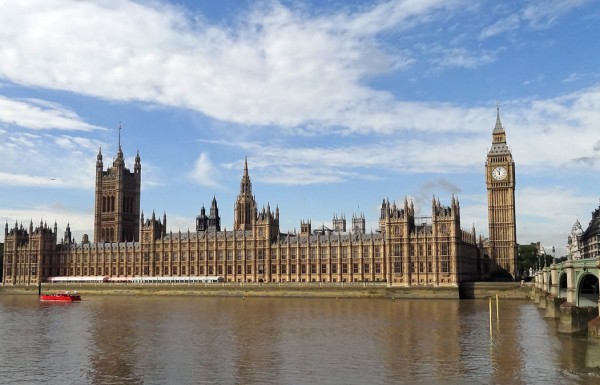 In his annual Mansion House speech to business leaders on 10 June 2015, George Osborne announced a new fiscal framework. This would require governments in ‘normal times’ to run a budget surplus. Details of the new framework would be spelt out in the extraordinary Budget, due on 8 July.
In his annual Mansion House speech to business leaders on 10 June 2015, George Osborne announced a new fiscal framework. This would require governments in ‘normal times’ to run a budget surplus. Details of the new framework would be spelt out in the extraordinary Budget, due on 8 July.
If by ‘normal times’ is meant years when the economy is growing, then this new fiscal rule would mean that in most years governments would be require to run a surplus. This would reduce general government debt.
And it would eventually reduce the debt from the forecast ratio of 89% of GDP for 2015 to the target of no more than 60% set for member states under the EU’s Stability and Growth Pact. Currently, many countries are in breach of this target, although the Pact permits countries to have a ratio above 60% provided it is falling towards 60% at an acceptable rate. The chart shows in pink those countries that were in breach in 2014. They include the UK.
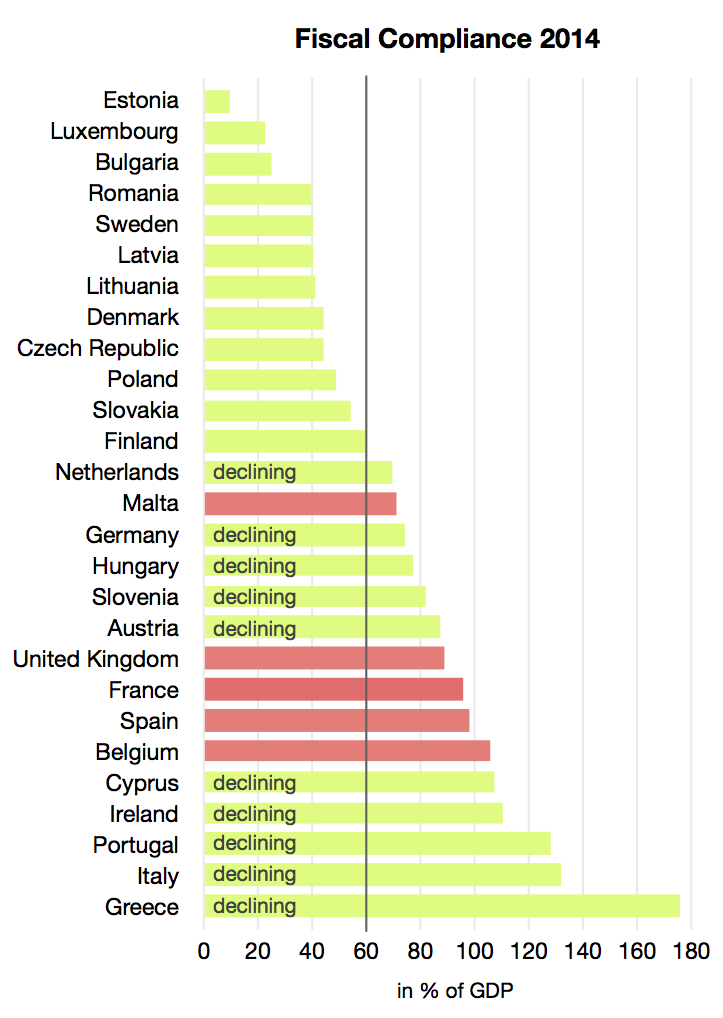 Sweden and Canada have similar rules to that proposed by George Osborne, and he sees them as having been more able to use expansionary fiscal policy in emergency times, such as in the aftermath of the financial crisis of 2007/8, without running excessive deficits.
Sweden and Canada have similar rules to that proposed by George Osborne, and he sees them as having been more able to use expansionary fiscal policy in emergency times, such as in the aftermath of the financial crisis of 2007/8, without running excessive deficits.
Critics have argued, however, that running a surplus whenever there is economic growth would dampen recovery if growth is sluggish. This makes the rule very different from merely requiring that, over the course of the business cycle, there is a budget balance. Under that rule, years of deficit are counterbalanced by years of surplus, making fiscal policy neutral over the cycle. With a requirement for a surplus in most years, however, fiscal policy would have a net dampening effect over the cycle. The chancellor hopes that this would be countered by increased demand in the private sector and from exports.
The rule is even more different from the Coalition government’s previous ‘fiscal mandate‘, which was for a ‘a forward-looking target to achieve cyclically-adjusted current balance by the end of the rolling, five-year forecast period’. The current budget excludes investment expenditure on items such as transport infrastructure, hospitals and schools. The fiscal mandate was very similar to the former Labour government’s ‘Golden rule’, which was to achieve a current budget balance over the course of the cycle.
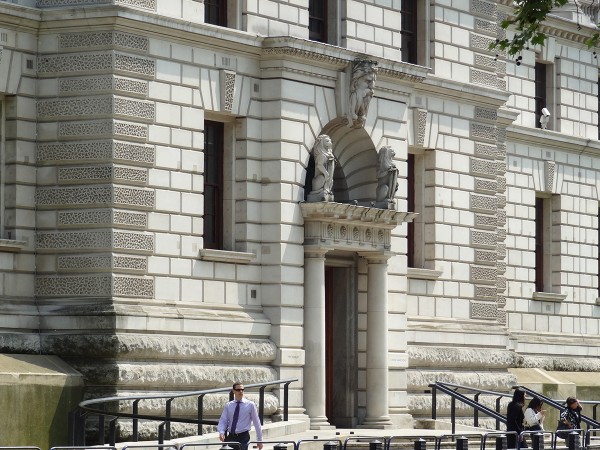 By excluding public-sector investment from the target, as was previously done, it can allow borrowing to continue for such investment, even when there is a substantial deficit. This, in turn, can help to increase aggregate supply by improving infrastructure and has less of a dampening effect on aggregate demand. A worry about the new rule is that it could lead to further erosion of public-sector investment, which can be seen as vital to long-term growth and development of the economy. Indeed, Sweden decided in March this year to abandon its surplus rule to allow government borrowing to fund investment.
By excluding public-sector investment from the target, as was previously done, it can allow borrowing to continue for such investment, even when there is a substantial deficit. This, in turn, can help to increase aggregate supply by improving infrastructure and has less of a dampening effect on aggregate demand. A worry about the new rule is that it could lead to further erosion of public-sector investment, which can be seen as vital to long-term growth and development of the economy. Indeed, Sweden decided in March this year to abandon its surplus rule to allow government borrowing to fund investment.
The podcasts and articles below consider the implications of the new rule for both aggregate demand and aggregate supply and whether adherence to the rule will help to increase or decrease economic growth over the longer term.
Video and audio podcasts
 George Osborne confirms budget surplus law Channel 4 News, Gary Gibbon (10/6/15)
George Osborne confirms budget surplus law Channel 4 News, Gary Gibbon (10/6/15)
 Osborne To Push Through Budget Surplus Rules Sky News (10/6/15)
Osborne To Push Through Budget Surplus Rules Sky News (10/6/15)
 OECD On Osborne’s Fiscal Plans Sky News, Catherine Mann (10/6/15)
OECD On Osborne’s Fiscal Plans Sky News, Catherine Mann (10/6/15)
 ‘Outright fiscal madness’ Osborne’s Mansion House Speech RT UK on YouTube, Harry Fear (11/6/15)
‘Outright fiscal madness’ Osborne’s Mansion House Speech RT UK on YouTube, Harry Fear (11/6/15)
 A “straightjacket” [sic] on future government spending? BBC Today Programme, Robert Peston; Nigel Lawson (11/6/15)
A “straightjacket” [sic] on future government spending? BBC Today Programme, Robert Peston; Nigel Lawson (11/6/15)
 Thursday’s business with Simon Jack BBC Today Programme, Gerard Lyons (12/6/15)
Thursday’s business with Simon Jack BBC Today Programme, Gerard Lyons (12/6/15)
Articles
Osborne seeks to bind successors to budget surplus goal Reuters, David Milliken (10/6/15)
George Osborne to push ahead with budget surplus law The Telegraph, Peter Dominiczak (10/6/15)
Osborne Wants U.K. to Build Treasure Chest During Good Times Bloomberg, Svenja O’Donnell (10/6/15)
Questions over Osborne’s Victorian-era budget plans BBC News (10/6/15)
Years more spending cuts to come, says OBR BBC News (11/6/15)
Is Chancellor right to want surplus in normal times? BBC News, Robert Peston (10/6/15)
George Osborne Unveils New Budget Surplus Law, But Critics Warn It Means Needless Cuts Huffington Post, Paul Waugh (10/6/15)
George Osborne’s fiscal handcuffs are political, but he does have a point Independent, Hamish McRae (11/6/15)
Osborne’s budget surplus law follows UK tradition of moving goalposts Financial Times, Chris Giles (10/6/15)
George Osborne’s budget surplus rule is nonsense and it could haunt Britain for decades Business Insider, Malaysia, Mike Bird (10/6/15)
To cut a way out of recession we need growth, not austerity economics Herald Scotland, Iain Macwhirter (11/6/15)
George Osborne moves to peg public finances to Victorian values The Guardian, Larry Elliott and Frances Perraudin (10/6/15)
The Guardian view on George Osborne’s fiscal surplus law: the Micawber delusion The Guardian, Editorial (10/6/15)
Academics attack George Osborne budget surplus proposal The Guardian, Phillip Inman (12/6/15)
Osborne plan has no basis in economics Guardian letters, multiple signatories (12/6/15)
Is there an optimal debt-to-GDP ratio? Vox EU, Anis Chowdhury and Iyanatul Islam
No basis in economics Mainly Macro, Simon Wren-Lewis (16/6/15)
Questions
- Explain what is meant by a ‘cyclically adjusted current budget balance’.
- How does the speed with which the government reduces the public-sector debt affect aggregate demand and aggregate supply?
- What are the arguments for and against running a budget surplus: (a) when there is currently a large budget deficit; (b) when there is already a budget surplus? How do the arguments depend on the stage of the business cycle?
- Do you agree with the statement that ‘the biggest issue with the UK economy right now is not the government deficit’. If so, what bigger issues are there?
- How could public-sector debt as a proportion of GDP decline without the government running a budget surplus?
- How might the term ‘normal times’ be defined? How does the definition used by the Chancellor affect the rate at which the public-sector debt is reduced?
- How sustainable is the current level of public-sector debt? How does its sustainability relate to the interest rate on long-term government bonds?
- If there is a budget surplus, such that G – T is negative, what can we say about the balance betwen (I + X) and (S + M)? What good and adverse consequences could follow?
- Why do George Osborne’s plans for budget surpluses ‘risk a liquidity crisis that could also trigger banking problems, a fall in GDP, a crash, or all three’?
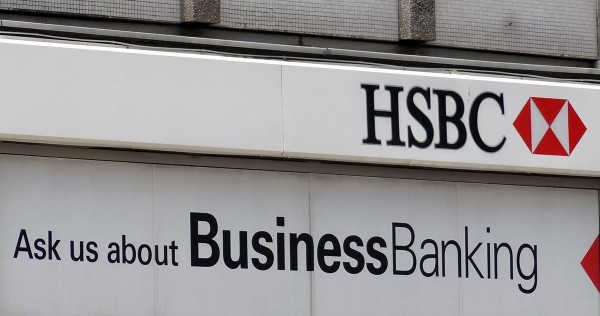 HSBC is a familiar feature of many high streets in the UK and this is hardly surprising, given that it is the largest bank in Europe. But could this be about to change? With uncertainty surrounding the UK’s in-out vote on the EU, the future of the banking levy and HSBC’s desire to reduce the size of its operations, the UK high street might start to look quite different.
HSBC is a familiar feature of many high streets in the UK and this is hardly surprising, given that it is the largest bank in Europe. But could this be about to change? With uncertainty surrounding the UK’s in-out vote on the EU, the future of the banking levy and HSBC’s desire to reduce the size of its operations, the UK high street might start to look quite different.
In the UK, 26,000 staff are employed in its retail banking sector, with 48,000 workers across the whole of its UK banking operations. HSBC has plans to downsize its business globally, with expected job losses in the UK of 8000 workers and a total of 25,000 jobs across the world. This would reduce its workforce by around 10%. This could have big implications for the UK economy. Although many of the job losses would not be enforced, given that HSBC does have a relatively high staff turnover, it is likely to mean some forced redundancies. With job creation being one of the big drivers of the UK economy in the last couple of years, this could put a dampner on the UK’s economic progress.
A further change we are likely to see will be the renaming of high street branches of HSBC, as new government rules are requiring HSBC to separate its investment and retail banking operations. Much of this stems from the aftermath of the financial crisis and governments trying to reign in the actions of the largest banks. Ring fencing has aimed to do this as a means of protecting the retail banking sector, should the investment banking part of the bank become problematic.
 However, perhaps the biggest potential shock could be the possibility of HSBC leaving the UK and moving to a new base in Hong Kong. A list of 11 criteria has been released by HSBC, outlining the factors that will influence its decision on whether to stay or go.
However, perhaps the biggest potential shock could be the possibility of HSBC leaving the UK and moving to a new base in Hong Kong. A list of 11 criteria has been released by HSBC, outlining the factors that will influence its decision on whether to stay or go.
The UK’s decision on Europe is likely to be a key determinant, but other key factors against remaining in the UK are ‘the tax system and government policy in support of [the] growth and development of [the] financial services sector’. HSBC pays a large banking levy, as it is based not just on UK operations, but on its whole balance sheet.
HSBC’s Chief Executive, Stuart Gulliver, has said that the discussion on the potential move to Hong Kong is based on the changing world.
“We recognise that the world has changed and we need to change with it. That is why we are outlining the following… strategic actions that will further transform our organisation… Asia [is] expected to show high growth and become the centre of global trade over the next decade… Our actions will allow us to capture expected future growth opportunities.”
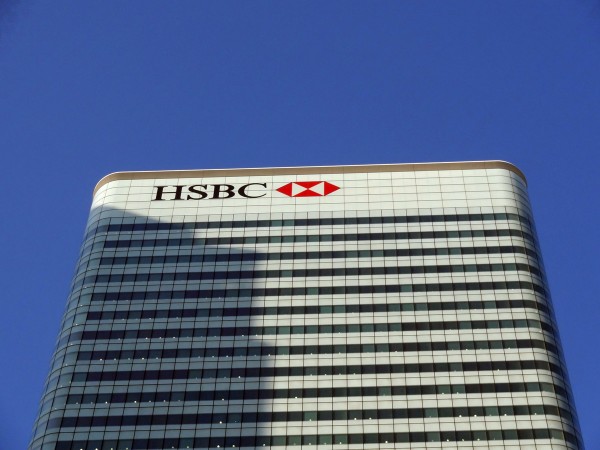 Leaving the EU will have big effects on consumers and businesses, given that it is the UK’s largest market, trading partner and investor. Whether or not decisions of key businesses such as HSBC will have an impact on the referendum’s outcome will only be known as we get closer to the day of the vote (which is still some way off!). It will, however, be interesting to see if other companies raise similar issues in the coming year, as the referendum on the EU draws nearer. We should also look out for any potential change in the UK’s banking levy and what impact, if any, this has on HSBC’s decision to stay or go and on the future of any other banks.
Leaving the EU will have big effects on consumers and businesses, given that it is the UK’s largest market, trading partner and investor. Whether or not decisions of key businesses such as HSBC will have an impact on the referendum’s outcome will only be known as we get closer to the day of the vote (which is still some way off!). It will, however, be interesting to see if other companies raise similar issues in the coming year, as the referendum on the EU draws nearer. We should also look out for any potential change in the UK’s banking levy and what impact, if any, this has on HSBC’s decision to stay or go and on the future of any other banks.
Has HSBC already decided to leave the UK? The Telegraph, Ben Wright (10/6/15)
HSBC plans to cut 8,000 jobs in the UK in savings drive BBC News (9/6/15)
The Guaridan view on HSBC: a bank beyond shame The Guardian (10/6/15)
HSBC brand to vanish from UK high streets Financial Times, Emma Dunkley (9/6/15)
HSBC job cuts should come as little surprise Sky News, Ian King (9/6/15)
HSBC in charts: Where the bank plans to generate growth Financial Times, Jeremy Grant (9/6/15)
HSBC’s local rethink can’t shore up global act Wall Street Journal, Paul Davies (9/6/15)
Can George Osborne persuade HSBC to stay in the UK? BBC News, Kamal Ahmed (9/6/15)
Questions
- What is the UK’s banking levy and why does it affect a company like HSBC disproportionately?
- Look at the list of 11 criteria that HSBC have produced about staying in the UK or moving to Hong Kong. With each criterion, would you place it in favour of the UK or Hong Kong?
- Why is the banking sector ‘not a fan’ of the government policy of ring fencing?
- What impact would the loss of 8000 UK jobs have on the UK economy?
- Why does it matter to a bank such as HSBC if the UK is a member of the EU?
 The mood has changed in international markets. Investors are becoming more pessimistic about recovery in the world economy and of the likely direction of share prices. Concern has centred on the Chinese economy. Forecasts are for slower Chinese growth (but still around 5 to 7 per cent) and worries centre on the impact of this on the demand for other countries’ exports.
The mood has changed in international markets. Investors are becoming more pessimistic about recovery in the world economy and of the likely direction of share prices. Concern has centred on the Chinese economy. Forecasts are for slower Chinese growth (but still around 5 to 7 per cent) and worries centre on the impact of this on the demand for other countries’ exports. Markets Are Too Pessimistic About Chinese Growth Bloomberg, Nouriel Roubini (4/9/15)
Markets Are Too Pessimistic About Chinese Growth Bloomberg, Nouriel Roubini (4/9/15)











